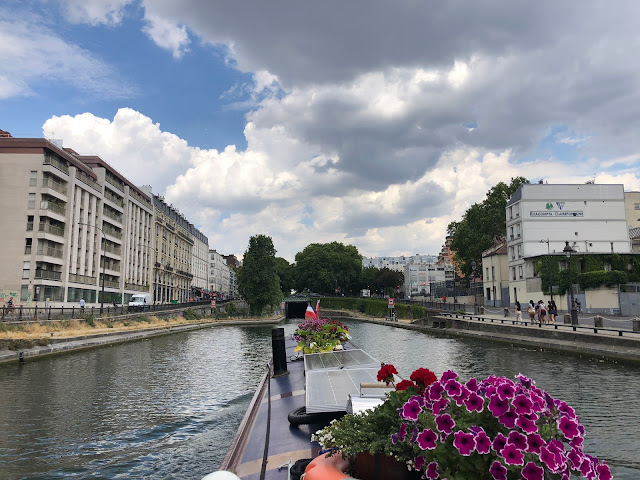The canal links the River Seine at Paris Arsenal to the Canal de l'Ourcq at Pont de la Crimée.
The canal was ordered to be built by Napolean in 1802. Together with the Canal St Denis and a very short stretch of the Canal de l'Ourcq it formed an important route across Paris cutting out a large loop in the River Seine that was known for being hazardous to shipping. Nowadays the Seine is fine as it has had weirs and locks introduced so the two canals are generally only used by trip boats and pleasure craft. Although the occasional commercial boat is still seen.
All the locks are 40 metres long by 7.7 metres wide and operated from control points equipped with close circuit TV.
This link provides more useful history about the canal:(visit link)
This is a double staircase lock where two chambers are joined and the middle gates act as the top gate of the lower chamber and the bottom gates of the higher chamber.
This is a double staircase lock where two chambers are joined and the middle gates act as the top gate of the lower chamber and the bottom gates of the higher chamber.
This is a double staircase lock where two chambers are joined and the middle gates act as the top gate of the lower chamber and the bottom gates of the higher chamber.
This is a double staircase lock where two chambers are joined and the middle gates act as the top gate of the lower chamber and the bottom gates of the higher chamber.


























No comments:
Post a Comment